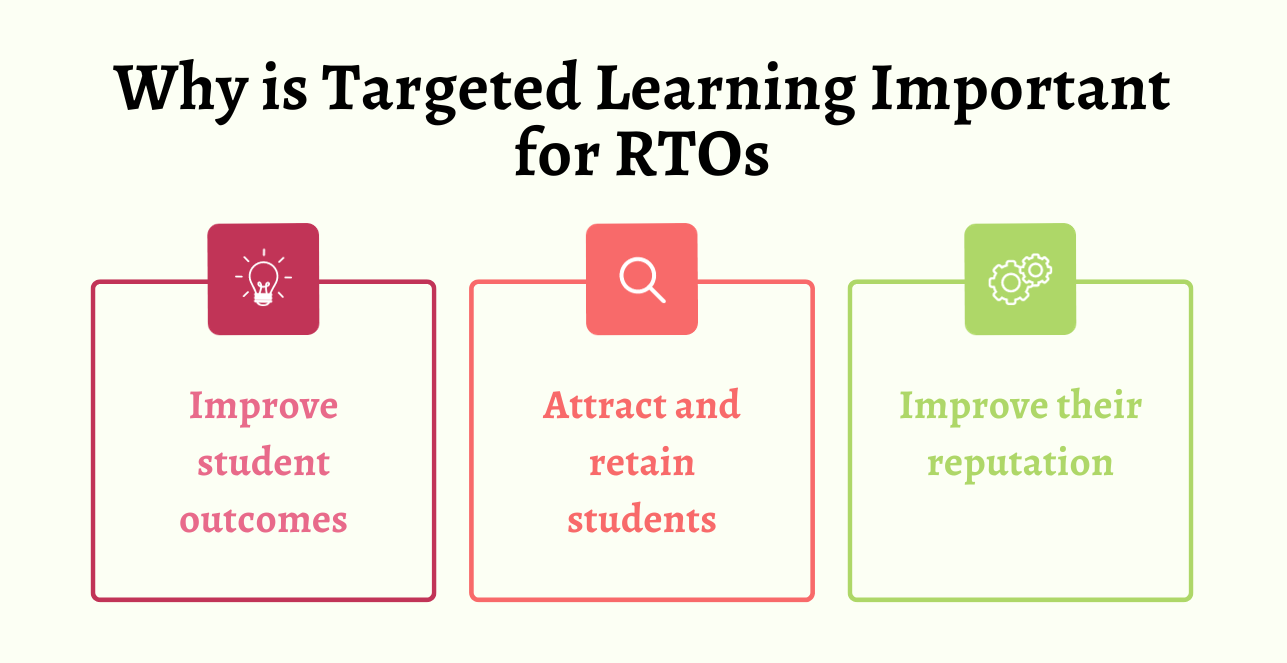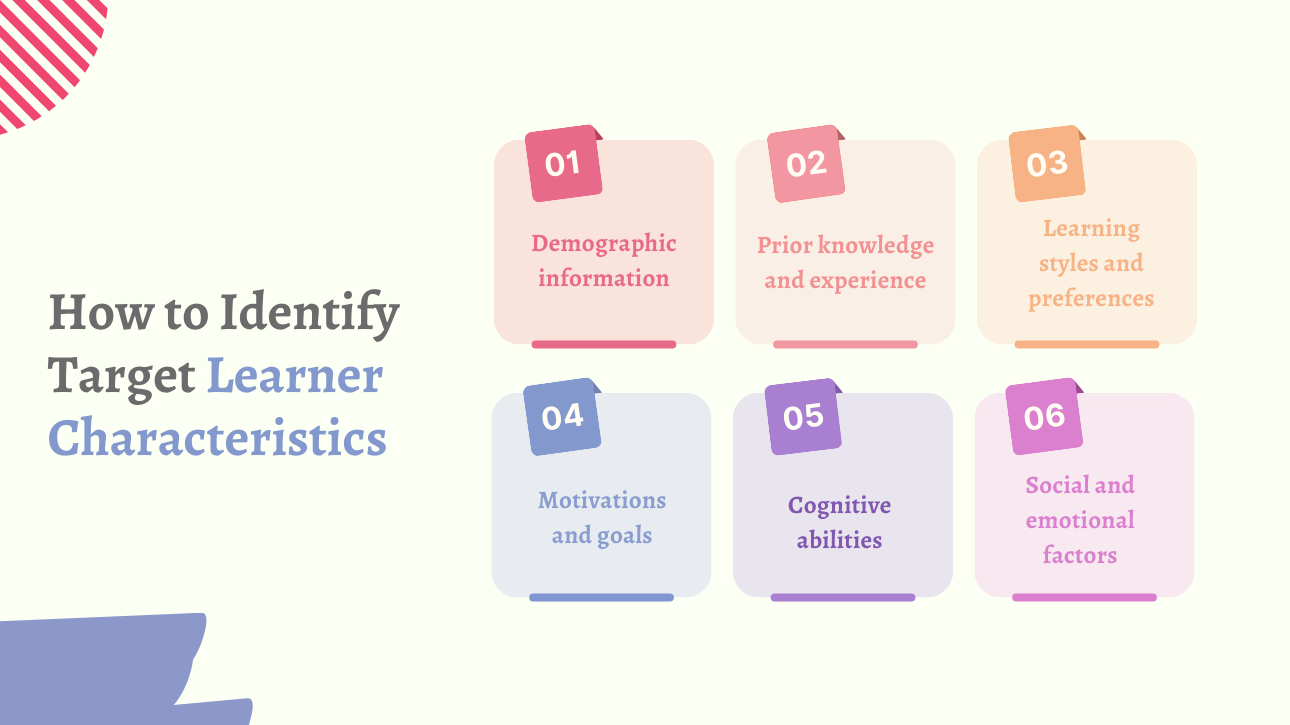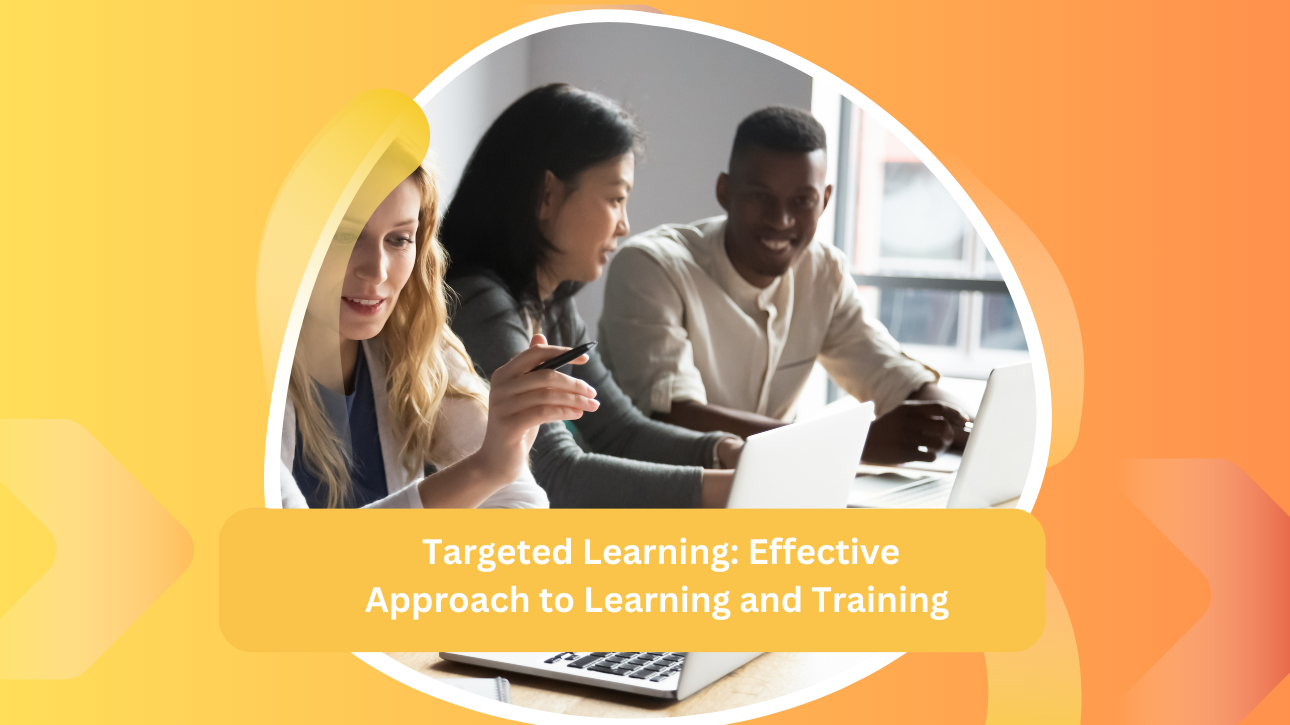To create training programs that are effective and engaging, it is essential to understand your target learners. Who are they? What are their needs and goals? What are their prior knowledge and experience? What are their learning styles and preferences?
By answering these questions, you can develop training programs that are tailored to the specific needs of your learners. This will increase their chances of success and help them to achieve their learning goals.
In this blog post, we will discuss how to identify target learner characteristics and use this information to create effective training programs. We will also explore the benefits of targeted learning for both RTOs and their students.
What is Targeted Learning
Targeted learning is a personalised approach to training that takes into account the individual characteristics of the learners. It ensures that students receive the instruction and support they need to succeed.
Why is Targeted Learning Important for RTOs
Targeted learning is important for RTOs because it can help them to:

- Improve student outcomes: When students receive training that is tailored to their needs, they are more likely to learn effectively and efficiently. This can lead to improved student outcomes, such as higher grades, better job placement rates, and higher salaries.
- Attract and retain students: Students are more likely to enrol in and complete training programs that are relevant to their interests and needs. Targeted learning can help RTOs to attract and retain students by offering programs that are tailored to the specific needs of different student groups.
- Improve their reputation: RTOs that offer targeted learning programs are seen as being more innovative and responsive to the needs of their students. This can lead to a better reputation for the RTO, which can attract more students and employers.
How to Identify Target Learner Characteristics

The first step in targeted learning is to identify your target learners. Who are the students you are most interested in attracting and serving? Once you have identified your target learners, you can research their needs, interests, and learning styles.
There are a number of ways to identify target learner characteristics, including:
- Demographic information: This includes factors such as age, gender, location, education level, socioeconomic status, race, and ethnicity.
- Prior knowledge and experience: This includes the learner’s existing knowledge and skills related to the topic being taught.
- Learning styles and preferences: This refers to the way that learners best learn. Some common learning styles include visual, auditory, kinaesthetic, and reading/writing.
- Motivations and goals: This includes the learner’s reasons for wanting to learn and their desired outcomes.
- Cognitive abilities: This includes factors such as intelligence, attention span, and memory.
- Social and emotional factors: This includes factors such as personality, self-confidence, and anxiety.
Using Learner Characteristics for Targeted Learning
Once you have identified the learner characteristics of your target learners, you can use this information to create effective training programs. Here are some tips:
- Tailor the learning content to the needs of the students: This means choosing content that is relevant to their interests and experiences, and that is pitched at the right level of difficulty.
- Use appropriate teaching and learning methods: Different learners learn in different ways, so it is important to use a variety of teaching methods in your training programs. This could include lectures, discussions, group work, and hands-on activities.
- Provide opportunities for students to practice and apply what they have learned: This is essential for learning retention. You can provide opportunities for students to practice and apply what they have learned through assignments, projects, and simulations.
- Assess student learning regularly: This will help you to identify any areas where students need additional support. You can assess student learning through quizzes, exams, and practical assessments.
Conclusion
The Learner Analysis Process is a valuable tool for creating effective and engaging training programs. By understanding your target learners and their needs, you can design training programs that are more likely to help them succeed.
Are you an RTO looking for the best training resources then VET Resources is your partner. We also offer free RTO consultation. We also have a YouTube channel with videos on RTO and its operations. For more information, please contact us here.
Frequently Asked Questions (FAQs)
Q.1. What are the 4 characteristics of learners?
A.1. There are many different ways to classify learner characteristics, but four common categories are:
- Demographics: This includes factors such as age, gender, race, ethnicity, and socioeconomic status.
- Prior knowledge and experience: This includes the learner’s existing knowledge and skills related to the topic being taught.
- Learning styles: This refers to the way that learners best learn. Some common learning styles include visual, auditory, kinaesthetic, and reading/writing.
- Motivations and goals: This includes the learner’s reasons for wanting to learn and their desired outcomes.
Q.2. What is a target learner?
A.2. A target learner is a specific group of learners that an instructor or instructional designer is designing for. For example, a target learner might be all 10th-grade students in a public school district, or all employees of a particular company. By identifying and understanding their target learners, instructors and instructional designers can create more effective and engaging learning experiences.
Q.3. What are the characteristics of an effective learner?
A.3. Effective learners are motivated, self-regulated, and have strong critical thinking skills. They are also able to adapt their learning strategies to different situations and are open to feedback.
Here are some specific characteristics of effective learners:
- Motivation: Effective learners are motivated to learn and have a clear understanding of their goals.
- Self-regulation: Effective learners are able to manage their own learning, including setting goals, developing strategies, and monitoring their progress.
- Critical thinking skills: Effective learners are able to think critically about the information they are learning, including questioning it, evaluating it, and applying it to new situations.
- Adaptability: Effective learners are able to adapt their learning strategies to different situations.
- Openness to feedback: Effective learners are open to feedback and use it to improve their learning.
Q.4. What are some examples of targeted learning in action?
A.4. Here are some examples of targeted learning in action:
- A company might offer different training programs for new hires, experienced employees, and managers.
- A teacher might use different teaching methods and assessments for students with different learning styles.
- A software company might provide personalised tutorials for users of its products.
- A fitness instructor might develop different workout plans for clients with different fitness goals.
Q.5. How can I measure the success of my targeted learning program?
A.5. There are a number of ways to measure the success of your targeted learning program, including:
- Student satisfaction surveys
- Student performance assessments
- Employer satisfaction surveys
- Training completion rates
- Job placement rates
By tracking these metrics, you can identify areas where your program is succeeding and areas where it needs improvement.
Q.6. What is the difference between targeted learning and personalised learning?
A.6. Targeted learning and personalised learning are often used interchangeably, but there is a subtle difference between the two. Targeted learning is focused on designing and delivering training programs that meet the needs of a specific group of learners. Personalised learning, on the other hand, is focused on tailoring the learning experience to the individual needs of each learner.
Disclaimer:
The information presented on the VET Resources blog is for general guidance only. While we strive for accuracy, we cannot guarantee the completeness or timeliness of the information. VET Resources is not responsible for any errors or omissions, or for the results obtained from the use of this information. Always consult a professional for advice tailored to your circumstances.






